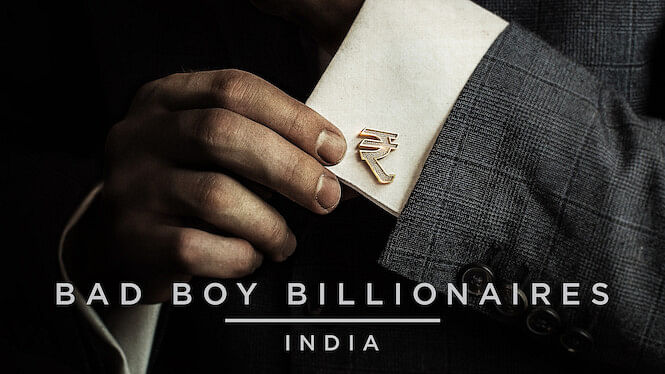At a time when India’s glaring inequalities have come into sharp relief, with wage labourers and farmers fighting for their lives and livelihoods, corporates have amassed even more wealth during the pandemic. In this context, Netflix’s docu-series on India’s fraudulent ‘billionaires’ is the start of a welcome conversation. Three episodes of ‘Bad Boy Billionaires: India’— on Vijay Mallya, Nirav Modi and Subrata Roy — were released this week after a court in Araria, Bihar vacated its stay order. The episode on Ramalingu Raju is withheld as the matter is pending in Hyderabad court.
The series details the rise and fall of these celebrated business tycoons, as they kept stealing thousands of crores to expand their empires and burnish their vanity, while eventually their lies caught up with them. Though this is not investigative journalism — rather only a compilation of publicly available information — it tells these stories in a typically melodramatic fashion (think ‘Wild, Wild Country’) with a mix of rare archival footage, interviews with journalists and the subjects’ inner circle, inviting viewers into a rarefied world of super-rich jetsetters, glamorous supermodels and lavish parties.
The first two episodes, on Vijay Mallya and Nirav Modi respectively, takes time in painting their subjects as bold, visionary tycoons who revolutionised their industries against all odds and conventions — Mallya subverting the moral and advertising restrictions on the liquor business by selling his flamboyant lifestyle as a brand, while Nirav Modi made the leap from a discreet, clannish Surat diamond trader to a tasteful, high-end multinational jeweller. Both their journeys are fetishised as pioneering for business, and flawed at their worst.
Some space is given to former employees, collaborators and unwitting accomplices who got caught up in the trail of destruction left behind by these megalomaniacs, as they borrowed crores from state-owned banks with impunity, laundered money through shell companies (in the case of Modi) and their businesses failed.
These crooks move in similar circles, as proved by surprising cameos by the Donald Trump clan in both episodes. In one old interview, when Mallya is compared to Trump, he quips rather presciently, ‘He likes to live his life, as I indeed do… but I’m not anywhere near bankruptcy.’ In the second episode, we see Donald Trump Jr, gracing one of Modi’s New York store launches.
Many interlocutors are surprisingly close to the subject—Mallya’s son Siddharth, seizes the opportunity to set the narrative of his father as a passionate businessman unjustly framed as a ‘political pawn’. This is juxtaposed with stories of former Indian employees who have yet to be paid for their years of work, and the unfortunate suicide of the wife of another unpaid employee. Modi’s former employees too languish jobless and penniless in Surat, still hoping that their employer will come back.
How were both Mallya and Modi allowed to escape the country? Why were their passports not seized when their wrongdoings came to light? These are uncomfortable questions for the Indian state which need further investigation.
The third episode on Subrata ‘Saharasri’ Roy is by far the most interesting, as it tells the story of how millions of unsuspecting wage labourers, blue-collar workers and housewives were duped out of their meagre savings by a man who fashioned his pyramid scheme with a cult of personality—as a spiritual, patriotic father figure. Not unlike the person currently leading our country. When asked by Simi Garewal how he managed to get crores of people to trust him with their life’s savings, he claims, ‘I’m a simple human, like any other…the most important thing in friendship is trust.’ It is this trust that Roy exploited by offering get-rich-quick schemes through the Sahara group, by employing thousands of agents to first invest themselves and then persuade their near and dear ones to do the same. By projecting the ‘business’ and its investors as a family, and himself as the benevolent patriarch, he managed to evade regulatory supervision for years before media reports of failed payments and a Supreme Court case brought it all tumbling down.
Archival footage and interviews showing Roy’s fall hark back to a nostalgic time when the media — even hacks like Arnab Goswami — actually held the powerful to account, went to the field for investigative stories, and government institutions seemed to fulfill their roles.
Ultimately the series is an entertaining, if somewhat glorifying, look at the oligarchs who have looted from India’s poor since liberalisation, fattening their pockets while the ‘99%’ slip further into poverty and joblessness. Hopefully it should provoke more thoughtful, investigative journalism into the corporates of today who are monopolising public resources and plundering our fragile environment.
